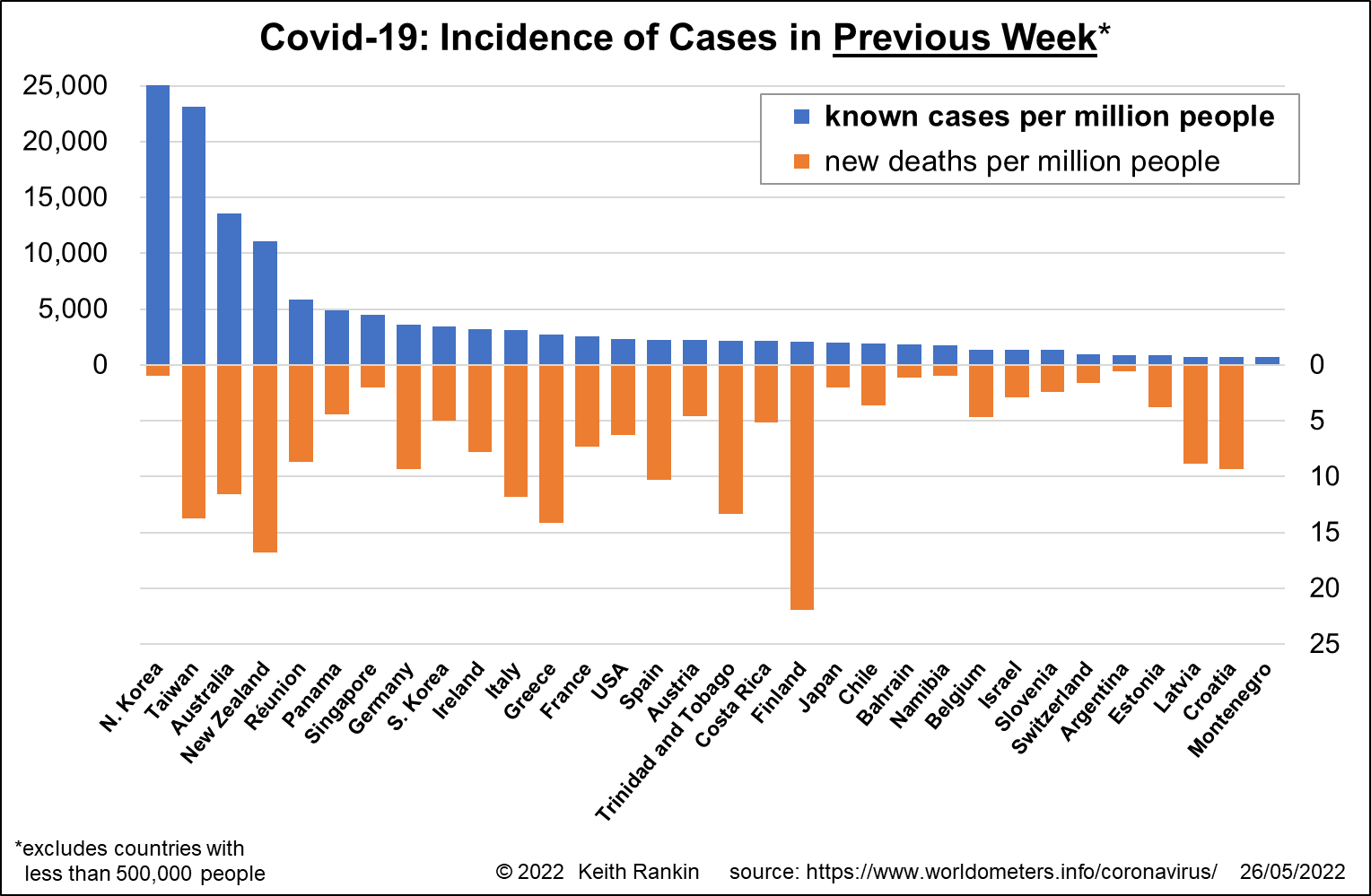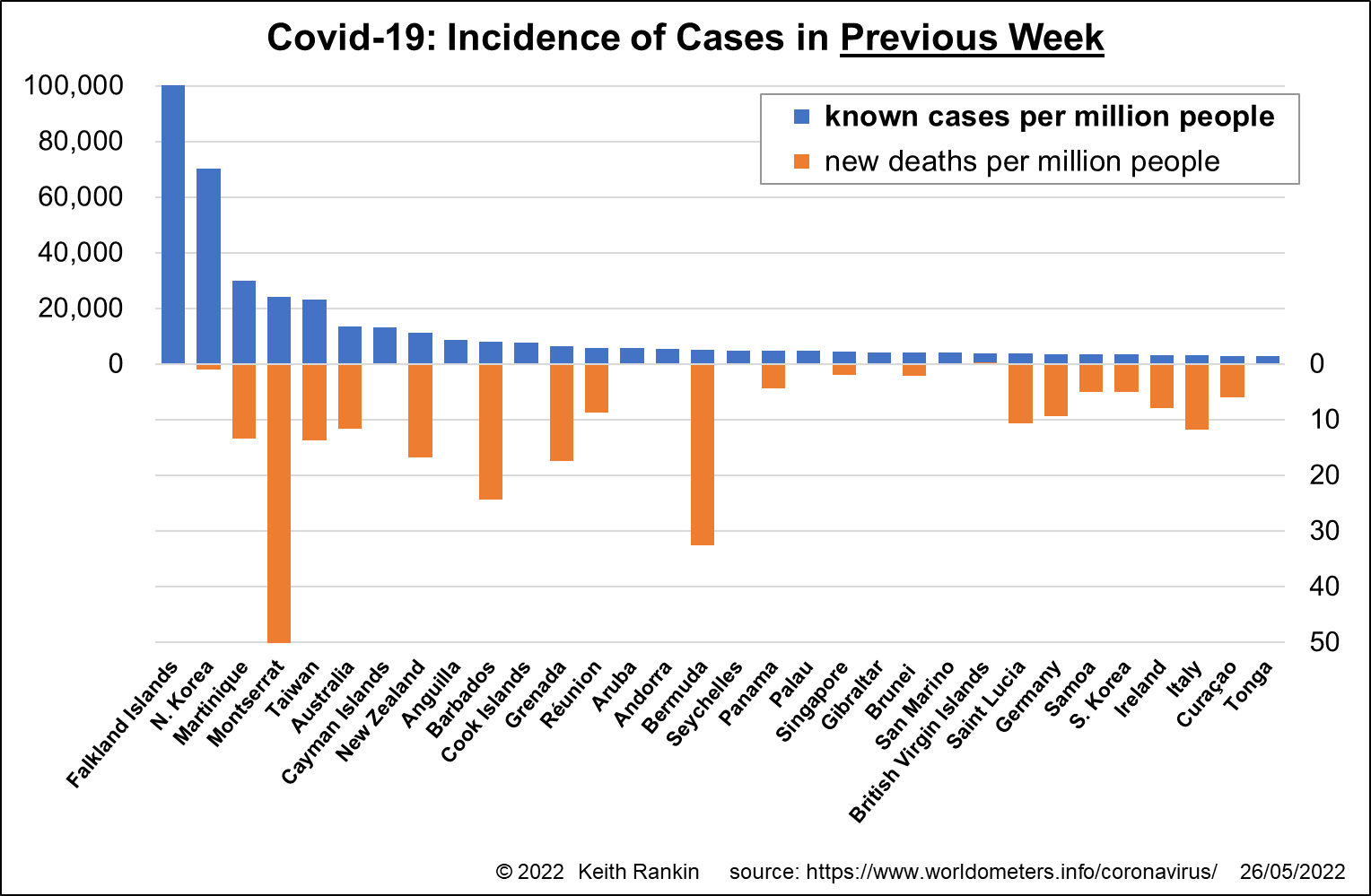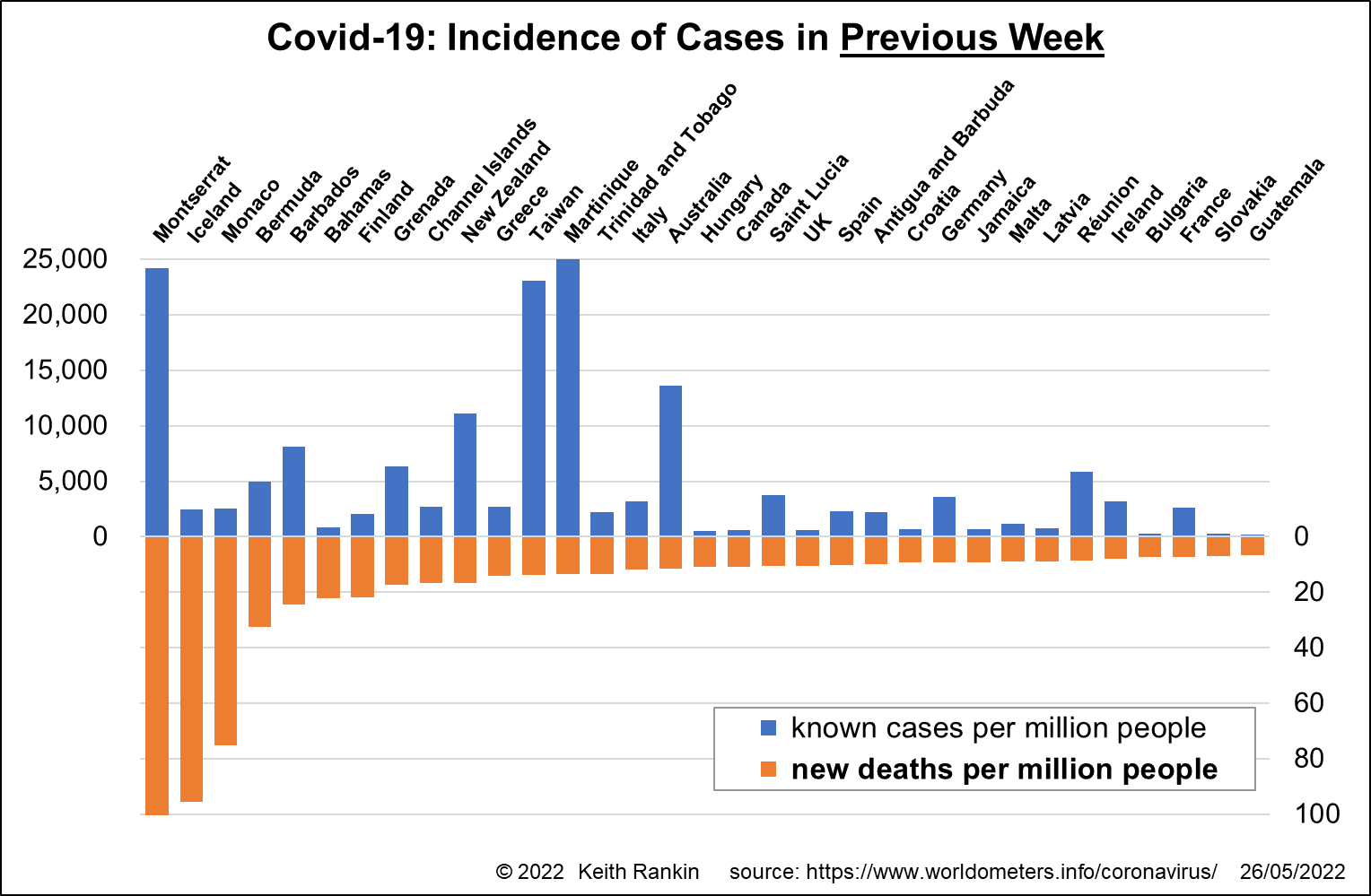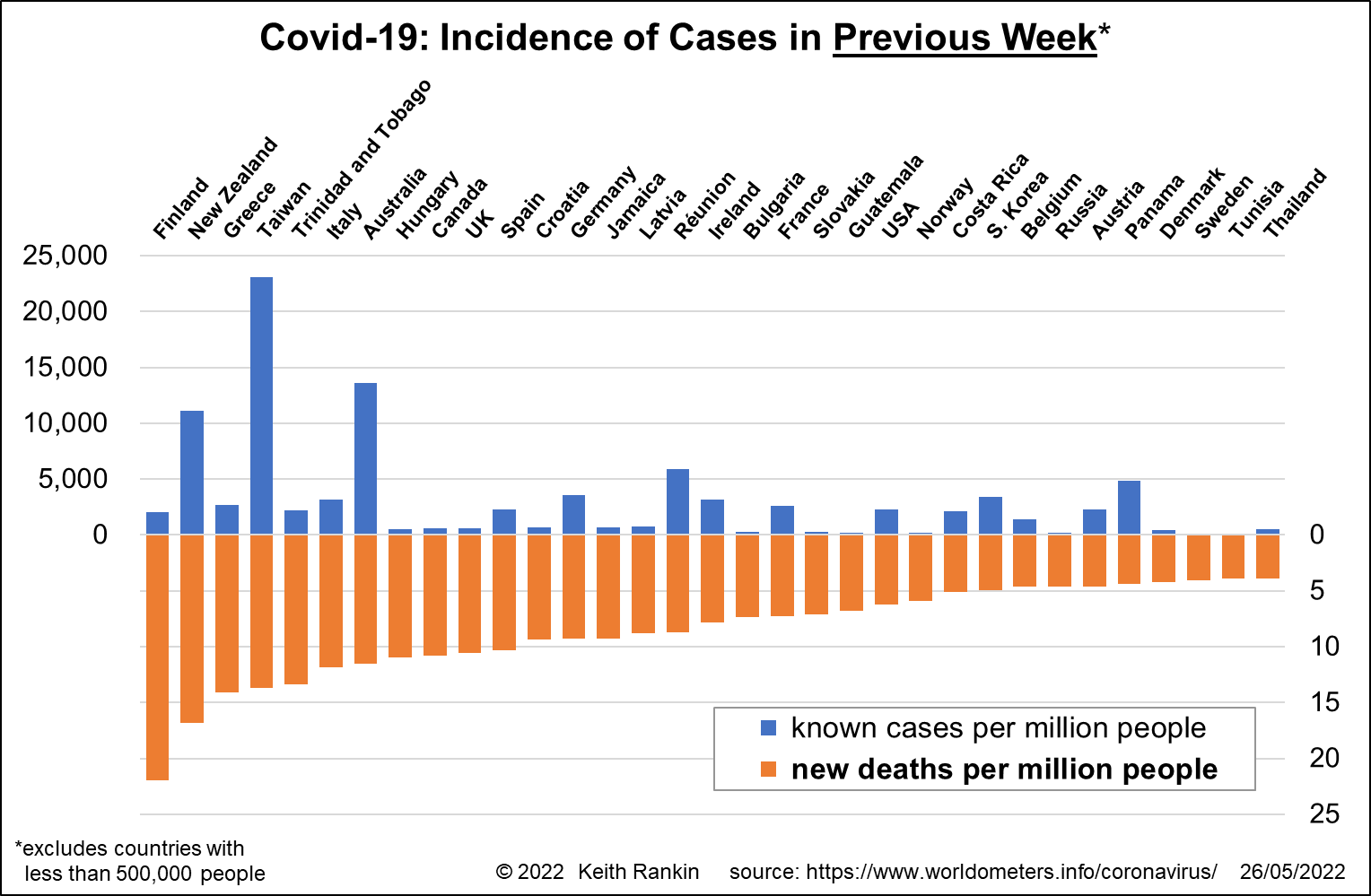Analysis by Keith Rankin.


Many of the reported counts of Covid19 cases and deaths now better reflect reporting variations rather than actual health data. These charts indicate the new stories that are increasingly falling under the international media radar.
I show both the ‘bigger countries’ (with populations of more than half a million), and ‘all countries’. The latter are important in that they tend to reflect new waves of contagion in those small countries which receive many travellers relative to their domestic populations. (We in New Zealand note Cook Islands, Samoa and Tonga.)
The obvious new story –generally well-reported – is that of North Korea (see second chart for its full count for the week). Its case numbers (about one in 15 of the country’s entire population) will be exaggerated in one respect, in that many relate to infections incurred well before last week. But in another sense, these numbers may be understated, given that the authorities in North Korea (officially listed as the ‘DPRK’) really have no idea how many people have Covid19.
The important covid story that has gone under the radar is Taiwan, which is now undergoing a New Zealand-style outbreak. (This can also be called a delayed South Korea style outbreak.)
We also note that Australia and New Zealand have been near the top of the covid league table for a few months now, and will probably not be dropping off the table for several more months.


When ranking the countries by reported covid deaths, again we see many tourist-oriented smaller countries. Iceland is probably an anomaly, with a substantial backcount ‘spike’ of deaths of people with Covid19.
Finland is an interesting case; it is a country that has been slow to report its total deaths, so it has been hard to get a sense of whether Finland has truly suffered many covid deaths recently, or whether the reported deaths are mainly people who would have died regardless of covid.
Taiwan’s covid outbreak is still very recent, so death numbers there will rise in coming weeks.
While some countries close to Ukraine show up on the last of these charts, others – especially Poland, Romania, and Moldova – do not. While Russian excess deaths are usually at least double reported deaths, Polish and Romanian reported covid deaths better reflect the true picture. Their absence suggests that the increased movement of people arising from the Ukraine War has had little impact on Covid mortality so far. (We might note that, even in those historical wars with the highest military casualty rates, deaths from disease have generally been higher than deaths from weapons. While the war in Ukraine may turn out to be unusual in this respect, testing specifically for Covid19 will be well down the priority list in Ukraine.)
We should also note that many countries in Africa and some in Asia have not been the best at reporting covid data, and also do not register most of their non-covid deaths. Demographers struggle with these countries; even more so for countries which are experiencing conflicts or famine.
*******
Keith Rankin (keith at rankin dot nz), trained as an economic historian, is a retired lecturer in Economics and Statistics. He lives in Auckland, New Zealand.








